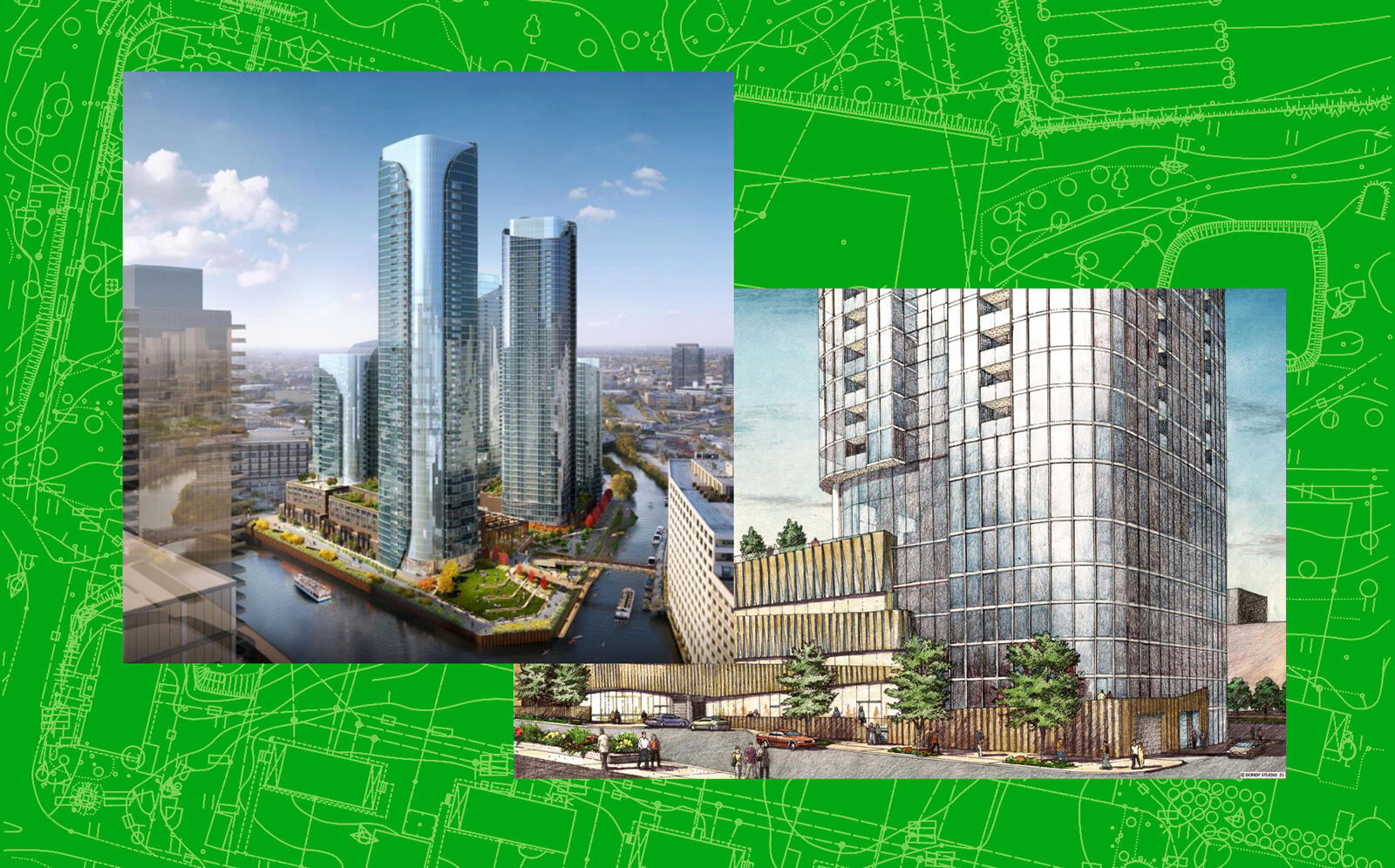Trending
Onni Group tweaks plans for Goose Island apartment megaproject
Tower heights are swapped in multi-phase development as market conditions play out

Onni Group has tweaked building heights and development timing for two of the four apartment towers at its massive mixed-use redevelopment on Chicago’s Goose Island, as the city’s downtown rental market recovers from pandemic vacancies.
Onni cut 10 stories out of one tower in the second phase of the decade-long project dubbed Halsted Pointe, and added nine to a third-phase tower.
Here’s how it breaks down: A second-phase tower has been chopped to 45 stories from 55. The third-phase tower is now at 65 stories, from 56 stories. That also nearly doubles the number of residential units to 1,015 in what will be the tallest tower.
The project’s first phase remains unchanged. It includes a 46-story tower construction. Another tower in the second phase also remains unchanged at 30 stories.
In total, the Vancouver-based developer is still planning 2,650 rental units and a 300-room hotel over the 2.7 million square feet. There will be 107,000 square feet of office space and roughly 48,000 square feet of retail space.
Onni makes its first appearance before the plan commission next week as it looks for zoning changes to overhaul Goose Island, the 160-acre industrial site on the North Channel of the Chicago River.
The developer did not explain why it was changing tower heights in the phases and did not respond to a request for comment. Planning department spokesman Pete Strazzabosco said more information will be provided at Thursday’s meeting. He added there was “potential for more” modifications before then.
Onni bought the site in 2019 for $38 milion. Its plans call for demolishing the Greyhound bus maintenance facility when it relocates from the 900 block of North Halsted next year. It hopes to make room for a sweeping setting with high-rise towers, marketplace-type retail and restaurants and the hotel — in essence, another neighborhood on the river.
Sterling Bay is in the process of developing the $6 billion Lincoln Yards mixed-use project only blocks away and Related Midwest is still doing preparation work for The 78, its 62-acre mixed-use neighborhood development south of downtown.
Onni introduced the plan, which also includes 3.8 acres of park and pedestrian space, in April at a virtual community meeting. A pedestrian bridge also will be built over the North Channel connecting it to the massive 600 W. Chicago complex.
The adjustments came after meetings with community groups and the planning department. Unlike other mega mixed-use developments in the works, Onni has not asked for tax increment financing.
Rental market volatility
Downtown Chicago has seen a flood of new apartment construction in recent years though construction appears to be slowing down, according to CBRE. From 2018 to 2020, more than 15,000 new units were delivered. Some 4,000 are scheduled to come on line this year and just 1,300 next year, the lowest annual amount in a decade.
But demand took a beating during the pandemic and into this year. Popular downtown neighborhoods such as Streeterville-River North and the Loop, for example, saw vacancies jump to 9.3 percent and 10.3 percent, according to a Marcus & Millichap report.
Those two areas saw a recent spike in interest as vaccinations increased, mask mandates were dropped and the city reopened events and entertainment. But the flight to suburban multifamily rentals outpaced city rentals. Metro-area vacancy rates in the quarter stood at 4.9 percent, according to the Marcus & Millichap analysis, in part driven by a 1.8 percent drop in the city.
That strength of the suburbs led to a 4.2 percent gain in the average monthly rental rate. The city, meanwhile, logged a 5.1 percent drop after rates declined across all apartment types.
With fewer new units in the pipeline, brokers expect it will help tighten the downtown market and eventually drive up occupancy and rent prices, and likely spur new construction. But uncertainty, tied to the Delta variant, is causing concern as companies rethink their return-to-the-office strategies, which could again impact where workers choose to live.




